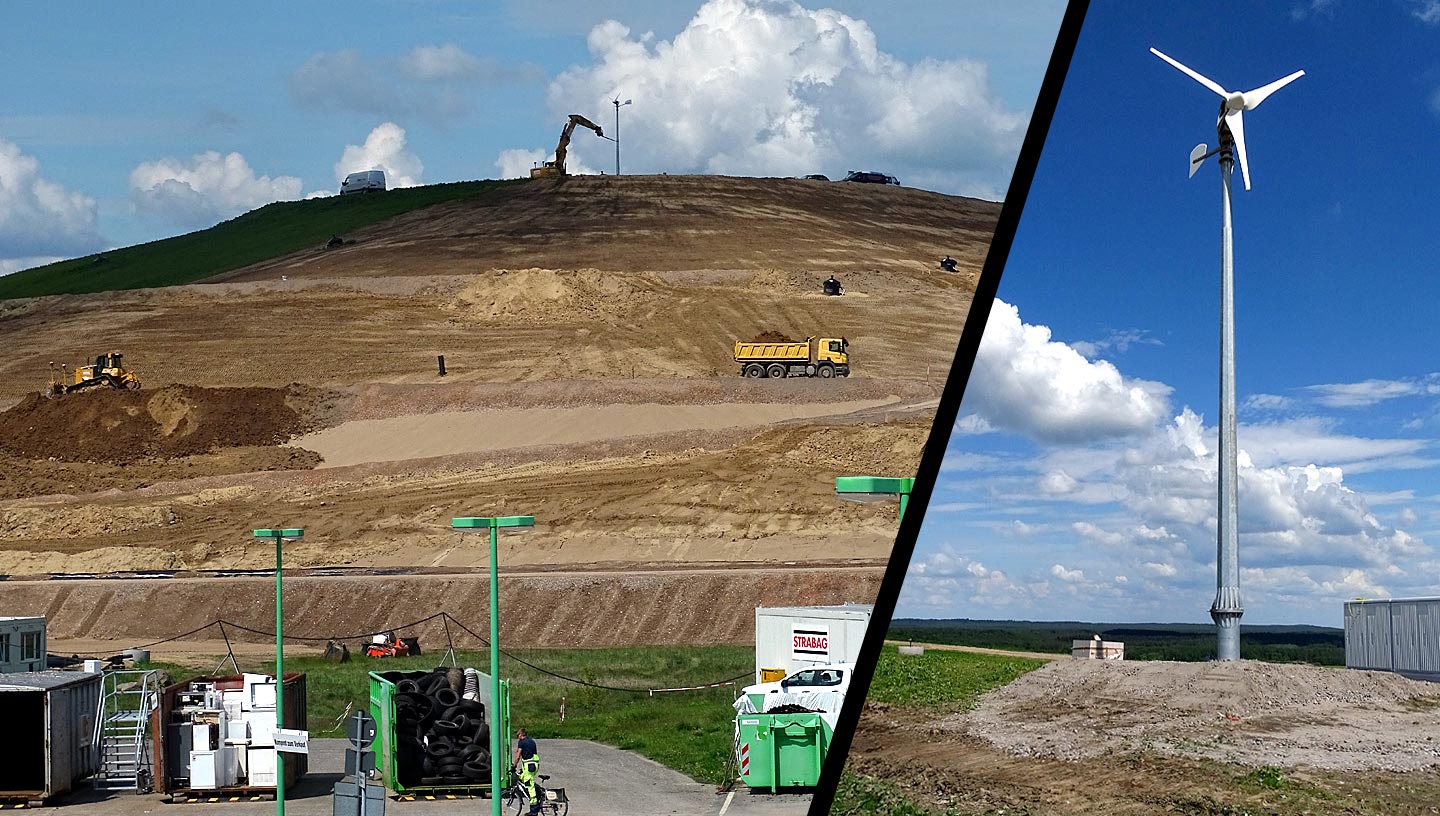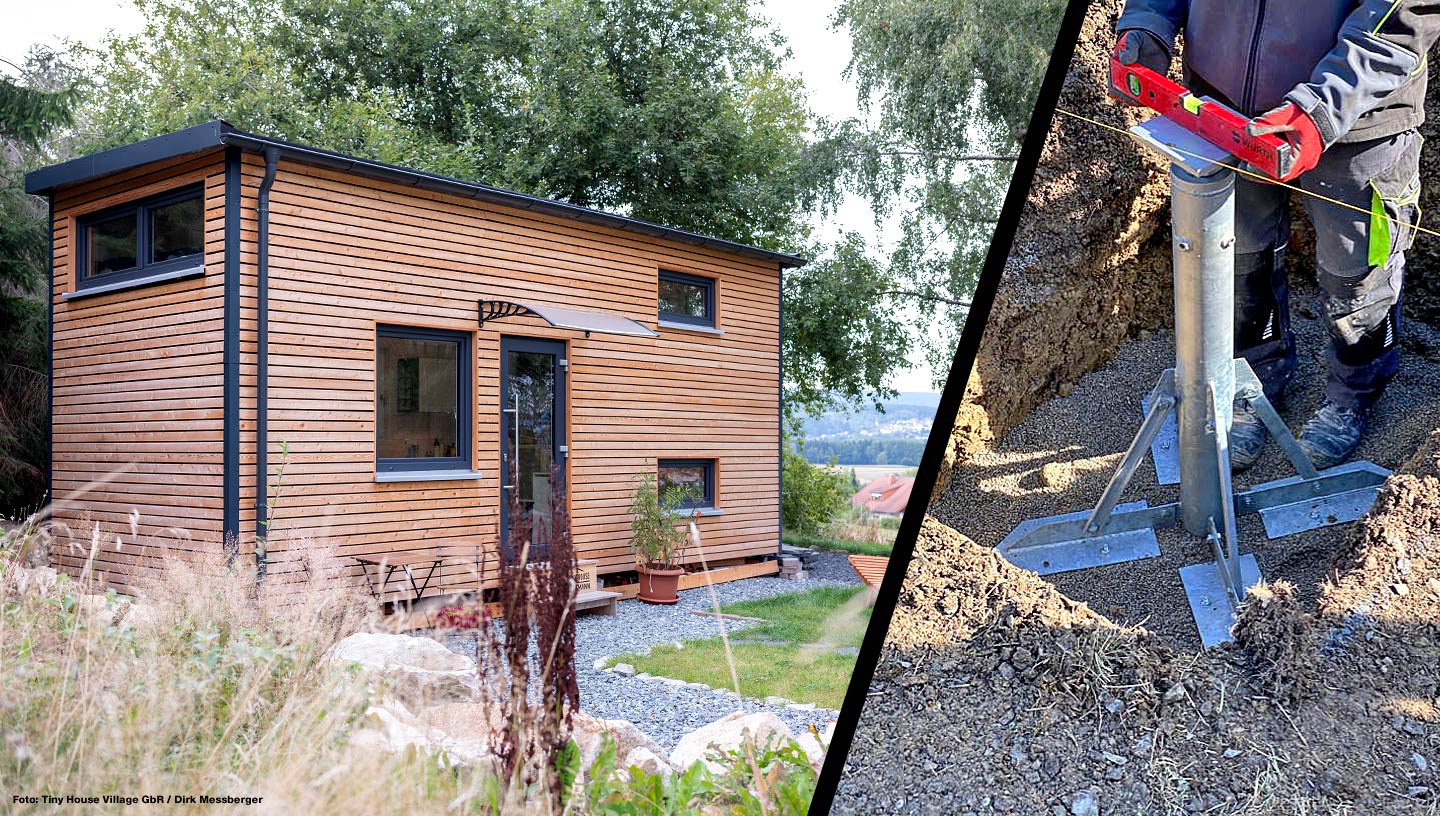Generating energy from waste — this has been practiced successfully for many decades. In addition to classic waste incineration, the most common method is the generation of energy through fermentation processes and fermentation gases. BFtec GmbH from Nentershausen is now opening up new perspectives for the generation of energy and the use of landfill sites thanks to the diverse uses of its STEEL-ROOT®.
Eberswalde in Brandenburg, around 50 kilometers northeast of Berlin, flat land, lots of forest. With a height of around 75 meters, the Ostende landfill, located east of the district town, is the highest survey far and wide. Around 4 million cubic meters of household waste are stored there, permanently secured for decades. By investing around 20 million euro, the Barnim district has had the 20 hectare landfill site recultivated in recent years and secured in accordance with legal requirements.
Difficult ground conditions
The exposed location of the site has been used since summer 2019 to generate energy from wind power. A 10 meter small wind turbine stands there like a summit cross. The turbine was installed by the IGEA mbH from Berlin, the wind turbine was supplied by the company Braun Windturbinen GmbH. The fact that the power generation plant could be installed there from an economic point of view is only possible through a concreteless foundation called STEEL-ROOT® from BFtec in Nentershausen. Because only the STEEL-ROOT® have such a low weight and such a low integration depth that they can be used as the only stable foundation variant on a landfill body.
After all, the recultivation layer of the Eberswalde landfill, which covers the waste as the top layer on a mineral sealing layer and a special film, is just 1.20 meters thick — clearly too small for a conventional foundation with concrete. But sufficient for using the STEEL-ROOT®, the advantages of which are that, like a counterweight foundation, they transfer the loads to the surrounding earth. The steel struts and plates of STEEL-ROOT®, as the name suggests, provide the necessary hold in the ground, similar to the root system of a tree.

They are specially configured for later use — in accordance with the requirement: "as much as necessary, as little as possible". For the foundation of the small wind turbine on the landfill body, a 2 by 2 meter excavation pit was dug approximately 70 centimeters deep, then a geotextile was laid to increase the load-bearing capacity and a gravel sub-grade with a grain size of 0/32 was produced. The STEEL-ROOT® was then lifted and aligned using an excavator. The two-person assembly team from PH Montage- und Projektentwicklung from Nentershausen then filled and compacted the ballast in layers.
The concreteless STEEL-ROOT® foundation protrudes about a meter from the ground, it has a connection hinge to which the actual mast was connected. Then the mast including the small wind turbine was raised with the help of an excavator. Connecting, wiring, done. In contrast to a concrete foundation, when using STEEL-ROOT® there is no setting time for the building material. Another advantage: the hinge assembly also allows the mast to be easily folded down with a hydraulic system for any service or repair work without the need for large amounts of machinery.
Custom-made solution by BFtec
The wind turbine on the garbage mountain has been supplying electricity since mid-2019 and is also a visible sign of renewable energies. It also stands for what the company BFtec from Nenterhausen has specialized in for 25 years of existence, namely custom-made solutions for technical problems in the area of building foundations.







